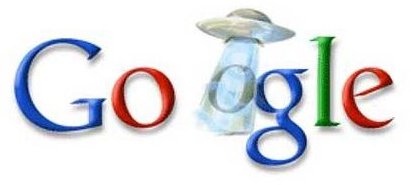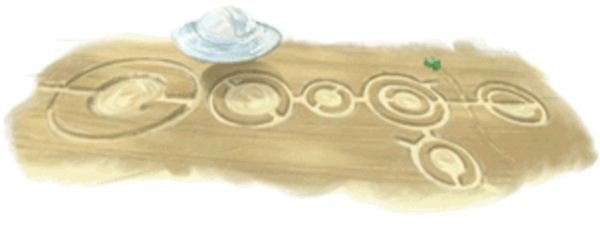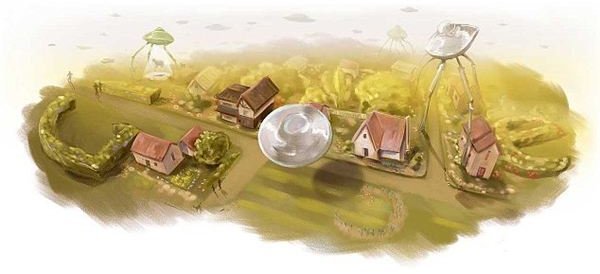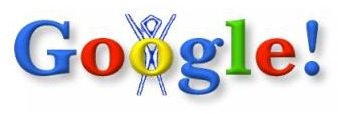Which Was the Best Google Homepage Image: Top 10 Countdown
It is the creativity, excellent artwork and dedication of a doodler that makes every Google homepage image (doodle) eye-catching. The first doodle graced Google’s homepage on August 20 1998. Founders Larry Page and Sergey Brin created the first doodle based on the Burning Man festival, an annual festival held in the Nevada Black Rock Desert. This doodle had a stick figure behind the second O. The image became an instant hit with search engine users.
Ever since the first Burning Man image, there have been over 700 doodles designed for the international crowd. Most of them were designed to commemorate an event, festival or birthday of famous scientists, authors and leaders. Some doodles are animated while others are interactive and allow users to mouse-over or click the logo to trigger an animation. Here are some of the best Google doodles that have wowed the search engine audience with their creativity and excellent animation:
10. Google X-Ray Doodle
This glowy “Bones” Doodle celebrated the 115th anniversary of the discovery of X-rays on November 8, 2010. On this day, in 1895, X-Rays were first discovered by a German scientist Wilhelm Conrad Roentgen, who accidentally observed them while experimenting with cathode rays in his lab. This doodle has an animated glow around the bones forming the letters.
9. Lego Bricks Doodle
On January 28 2008, Google celebrated the 50th anniversary of the Lego Brick with a special doodle on its homepage. The design team created a nice Google logo with interlocking Lego bricks forming the letters Google. There was a special reason of commemorating the 50th anniversary of the Lego Brick. Lego bricks were used by Google co-founders Larry Page and Sergey Brin as a low-cost casing alternative to protect their hard disks while developing the Google search engine.
8. Google Buckyball Doodle
An interactive animated Buckyball doodle graced the Google homepage on September 4, 2010. The doodle was created to commemorate the discovery of the spherical fullerene, or Buckyball, which was named after Richard Buckminster “Bucky” Fuller, who is credited for popularizing the geodesic dome. The Buckyball was discovered in 1985 by a team of scientists, and in 1996, lead scientist Robert Curl, Richard Smalley and Sir Harold Kroto were awarded the Nobel Prize for chemistry.
The Google doodle has the O shaped like the Buckyball, which can be turned and twisted placing the cursor over the logo. The animated logo can still be found at Google’s logo page.
7. Bunsen Burner Google Doodle
An animated Bunsen Burner Google doodle was unveiled on March 31, 2011 to celebrate the 200th birthday of Robert Bunsen, who along with his lab assistant Peter Desaga, invented the gas burner in 1885. The German chemist is also credited for discovering the elements rubidium and cesium. But he is always remembered for his gas burner, which has been an integral part of laboratories all around the world for 150 years.
This doodle has several test-tubes and series of flasks filled with multicolored chemicals. The animated Bunsen burner changes color from blue to purple, while the multicolored chemicals are dispensed from one flask to another. Check out the animated logo at Google.com/logos.
6. Google’s Thomas Edison Doodle
On February 2011, Google Doodle team rolled out an animated Google logo to mark the 164th birthday of American scientist Thomas Edison, creator of the practical lightbulb, the phonograph, the motion picture camera, and many other devices. The animated doodle features the animated version of original sketches of the motion picture camera, a whirring type writing machine and a glowing light bulb amongst other devices.
Braille Doodle
This rather undecipherable homepage image is one of Google’s most innovative doodles. The doodle was displayed on Google’s homepage in 2006 to celebrate Louis Braille’s 197th birthday. Louis Braille invented the Braille alphabet system for the blind in 1825. The system comprises of dots arranged in a rectangle. The Google doodle uses the Braille system with dots arranged in rectangle to spell out the letters G-O-O-G-L-E.
4. Mysterious UFO Doodles
A series of mysterious doodles featuring crop circles and unidentified flying objects appeared between 5th September and 21 September 2009. For some conspiracy theorists, this was Google’s cryptic way of saying “We made contact, finally”. For others, this was a tribute to a classic video game or a movie. On 5th September 2009, the Google homepage unveiled a logo with a flying saucer abducting the second O. when users clicked the logo, they landed on a search page of unexplained phenomenon displaying news and results for all purported UFO landings and hoaxes.

On September 15 2009, a new doodle emerged on the Google homepage and was as mysterious as the first one. The logo had a cornfield with the word Google etched in the format of crop circles and a UFO hovering above it. The mysterious crop circle-themed Google homepage image took the user to a search page for crop circles. Speculations became rife as someone from the Google team tweeted a string of co-ordinates within a few hours of revealing this logo. The coordinates pointed to Woodham Road, Surrey. While users were still perplexed by the logo and the following tweet, some enlightened minds quickly figured out that the doodles had something to do with H.G. Wells, as Woodham Road was the place of the first extraterrestrial landings in War of the Worlds, Wells’ classic sci-fi novel.

The third doodle confirmed the speculations as it featured Tripods, one of the alien characters from H.G. Wells’ classic science-fiction novel. Later, the Google Team revealed the three doodles were designed to celebrate the 143rd birthday of H.G. Wells. The series of UFO Google logos was one of the most mysterious doodles to date.

3. 20,000 Leagues Under the Sea Doodle
This interactive doodle was unveiled on February 8, 2011 to celebrate the 183rd birthday of Jules Verne, the father of science fiction. The logo was so popular that Google created a standalone HD version of it. The interactive Google doodle has letters shaped like the portholes of the Nautilus with a lever on the right side that allows users to navigate the underwater scenes from Verne’s 20,000 Leagues Under the Sea. Users can shift the lever up, down right and left to catch a glimpse of the animated sea. The Google homepage was designed by Google Doodler Jennifer Hom.
2. Yuri Gagarin Google Doodle
A doodle with an animated rocket launch graced Google’s homepage on April 12, 2011. The Yuri Gagarin-themed Google Doodle commemorated the 50th anniversary of man’s first flight into space. On April 12, 1961, soviet cosmonaut Yuri Gagarin became the first human to reach outer space. The Vostok spacecraft successfully completed Earth’s orbit on this day. His flight lasted for only 108 minutes and was quite risky. Upon re-entry and landing, Gagarin’s capsule was severely damaged, forcing him to land in a pod with a parachute.
This interactive animated Google logo image has a very 1960s artwork style and features the image of Yuri Gagarin in his spacesuit. If you mouse-over the homepage image, you will see a rocket launch into space. Clicking on the logo will take you to a search page for Yuri Gagarin.
1. Interactive Pac Man Doodle
Unveiled on May 21, 2010, the Pac Man Google homepage image was the first ever interactive playable doodle . The logo was released to mark the 30th birthday of Pac Man, one of the world’s most popular arcade video games ever developed for the coin-operated platform.
The Google Pac Man playable doodle had all 256 levels of the original game. The doodle team recreated all the levels, including the original bugs from the 1980s 8-bit gem. The letters were cleverly placed inside the mini-maze and the graphics and sound was recreated to give that 80s arcade feel to the logo. For next 48 hours, the Google homepage turned into a virtual coin-operated 8-bit arcade. The “I am Feeling Lucky” button was replaced by “Insert Coin.” Pressing this button would allow players to play the game and navigate Pac Man using the arrow keys. The game also had a hidden Easter egg -pressing the insert coin button once again unleashed Mrs. Pac Man and allowed another player to join the fun by controlling her with the WASD keys.
The playable Pac man logo was kept for 48 hours, but by popular demand, the game’s permanently available and can be played at <strong>Google.com/pacman</strong>. The Pac Man Google doodle is probably one of the most innovative doodles ever created.
References
- “Robert Bunsen’s birthday marked with Google Doodle”
- “Lego Celebrates with Google”
- The Complete Book of Spaceflight – From Apollo 1 to Zero Gravity (Online PDF, Library Genesis)
- “Interactive ‘20,000 Leagues’ Google Doodle Honors Jules Verne’s Birthday”
- “HG Wells’ birthday: Google UFO doodle explained”
- “Celebrating Pac man’s 30th Birthday”
- “X-rays’ 115th anniversary celebrated with Google Doodle”
- “Google doodle marks buckyball anniversary”
- “Google Doodle History”
